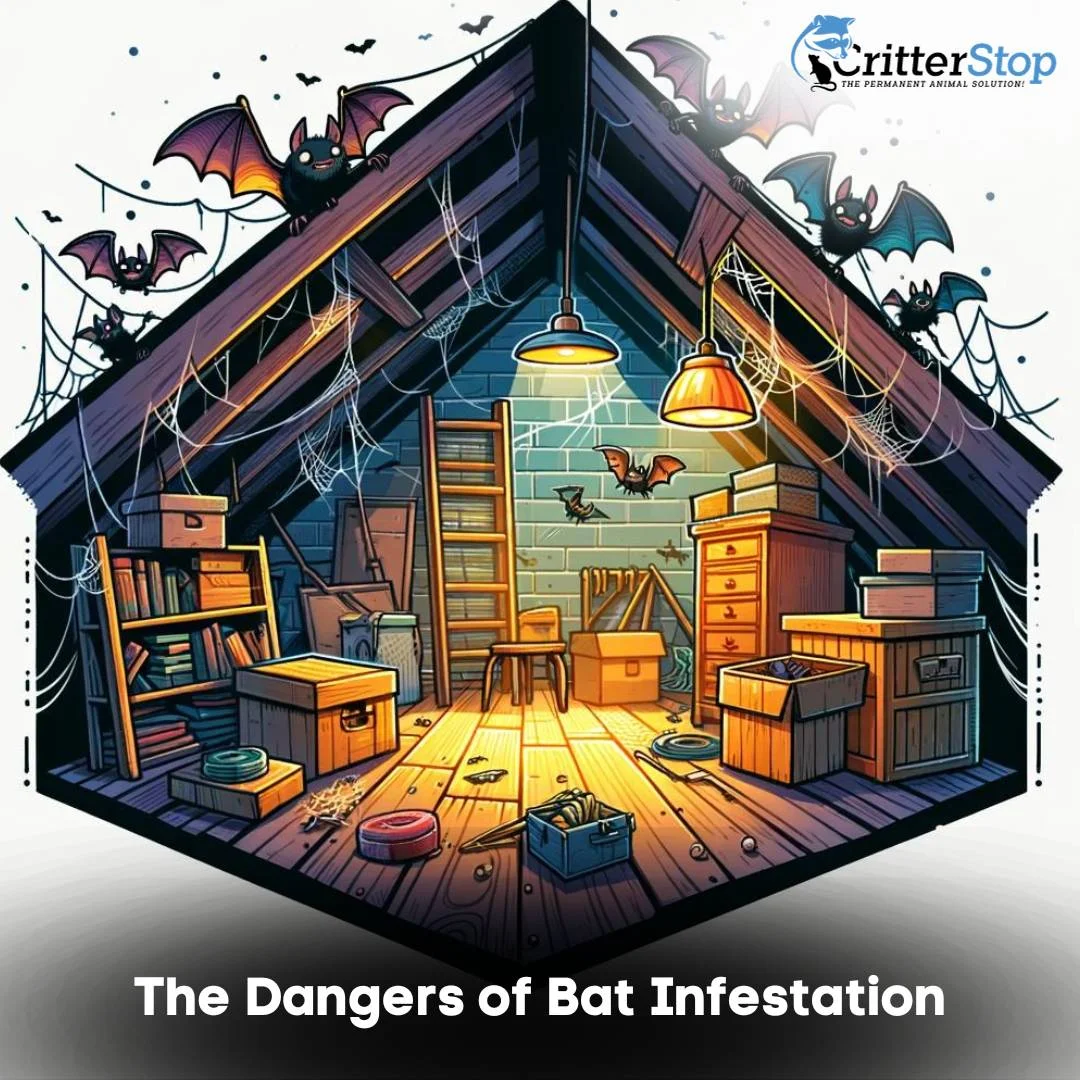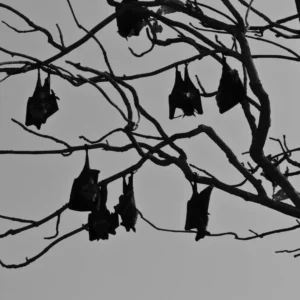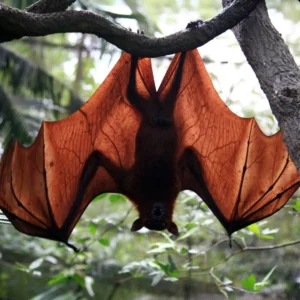
Bats are fascinating creatures that play important roles in ecosystems around the world. However, when they make their way into our homes, bat infestations can pose significant risks to our health and property. Identifying the presence of bats in your home is crucial in order to address the problem promptly and effectively. In this article, we will explore common signs of a bat infestation, how to spot bat droppings and guano, as well as the risks associated with such infestations. Additionally, we will discuss the importance of safely removing bats from your property, whether by hiring professional bat removal services or utilizing DIY techniques that actually work.
Discovering that your home has become a sanctuary for bats can be unsettling. However, being able to identify the presence of bats is the first step towards addressing the issue. Here are some common signs that indicate a bat infestation:
One of the most evident signs of a bat infestation is the presence of bat droppings, also known as guano. These droppings are typically small, oval-shaped, and dark brown or black. They may appear scattered around the roosting area, particularly in attics, basements, or chimneys.
Aside from the guano, you may also notice a strong and unpleasant odor in the affected area. This odor is often caused by the accumulation of bat urine and droppings over time. If you detect such a smell, it is essential to investigate further for potential bat infestation.
Another telltale sign of a bat presence is hearing strange noises, such as scratching or chirping sounds, especially at dusk or just before dawn. Bats are nocturnal creatures, and their activity patterns are most active during these times.

Bat droppings can come in various sizes, depending on the species of bat and their diet. However, they usually resemble small rod-shaped pellets with pointed ends. Unlike the droppings of other pests, bat droppings easily crumble upon touch due to their high silica content.
When it comes to locating bat droppings, it is best to concentrate your search in areas where bats are known to roost, such as attics, crawl spaces, or hidden corners. It is crucial to wear gloves and a face mask during the search to protect yourself from potential health risks associated with bat droppings.
Furthermore, it is important to note that bats are highly beneficial creatures. They play a crucial role in maintaining the balance of ecosystems by controlling insect populations. Bats are natural pest controllers, consuming vast amounts of insects each night, including mosquitoes, moths, and beetles. Without bats, the world would be overrun by these pests, leading to significant ecological and agricultural consequences.
While bats are generally harmless and prefer to avoid human contact, they can occasionally find their way into homes. This can happen when bats are seeking shelter or a suitable roosting site. Attics, chimneys, and wall voids are common areas where bats may establish their colonies. It is important to remember that bats are protected by law in many countries, and it is illegal to harm or kill them without proper permits or licenses.
If you suspect a bat infestation in your home, it is recommended to contact a professional wildlife removal service or bat conservation organization. These experts have the knowledge and experience to safely and humanely remove bats from your property, ensuring their well-being while addressing the issue at hand.
In conclusion, identifying the presence of bats in your home is crucial for addressing a potential infestation. By recognizing common signs such as bat droppings, unpleasant odors, and strange noises, you can take the necessary steps to resolve the issue while ensuring the welfare of these valuable and fascinating creatures.
While some people may think of bats as harmless creatures, a bat infestation in your home can have serious consequences for both your health and the structural integrity of your property. Let's explore some of the risks associated with bat infestations:

Bats are known carriers of various diseases, such as rabies and histoplasmosis. Histoplasmosis is an infectious disease caused by inhaling spores of the fungus present in bat droppings. Contracting this disease can lead to severe respiratory issues, especially for individuals with weakened immune systems.
Moreover, bat droppings can also harbor other harmful pathogens, such as viruses and bacteria. These pathogens can become airborne when the droppings dry out, putting you at risk of inhalation and subsequent infections.
It is important to note that while the risk of contracting diseases from bats is relatively low, it is still a concern that should not be taken lightly. Taking proactive measures to prevent bat infestations and ensuring proper cleanup and removal of bat droppings is crucial in maintaining a safe and healthy living environment.
Besides the health risks, bats can cause significant damage to your home's structure. Bats can squeeze through small openings and access attics, crawl spaces, and wall voids, eventually establishing roosting sites. Over time, their constant presence and activity can lead to staining of walls and ceilings due to urine and guano buildup.
Additionally, bat droppings can corrode building materials and even weaken the structural integrity of wooden beams or insulation. In extreme cases, excessive bat guano accumulation can cause ceilings and walls to weaken and collapse, posing a significant danger to the inhabitants.
It is crucial to address a bat infestation promptly to prevent further damage to your home. Seeking professional assistance from pest control experts who specialize in bat removal is highly recommended. These professionals have the knowledge, tools, and experience to safely and effectively remove bats from your property while minimizing the risk of structural damage.
Furthermore, implementing preventive measures such as sealing off potential entry points and installing bat houses in nearby areas can help deter bats from returning to your property in the future.
Remember, a bat infestation is not just a nuisance; it poses real risks to your health and property. By understanding these risks and taking appropriate action, you can ensure the safety and well-being of yourself and your loved ones.
If you have confirmed the presence of bats in your home, it is crucial to address the situation promptly to mitigate the risks. Bats, while beneficial for the environment, can pose health risks and cause damage to your property. There are two primary approaches to safely removing bats from your property: hiring professional bat removal services or attempting DIY techniques that have been proven to work.
Enlisting the help of professional bat removal services is often the most effective and safest way to handle a bat infestation. These professionals have the skills, knowledge, and equipment necessary to identify entry points, safely exclude bats, and ensure they do not return.
Professional bat removal services typically begin by conducting a thorough inspection of your property to determine the extent of the infestation and identify potential entry points. They will then develop a customized removal plan, which may involve the use of exclusion devices or one-way doors to allow bats to leave but prevent re-entry.
Once the bats are safely excluded, experts will proceed with necessary repairs and sealing off entry points to avoid future infestations. This approach ensures the humane removal of bats and reduces the likelihood of future bat-related issues.
Furthermore, professional bat removal services have the knowledge and experience to handle any legal requirements or permits that may be necessary for bat removal in your area. They can ensure that the process is carried out in compliance with local regulations and guidelines.

If you prefer a hands-on approach or wish to attempt DIY techniques before seeking professional help, there are a few methods that have been successful in removing bats. However, it is important to note that DIY techniques may not be suitable for all situations and could pose greater risks if not executed properly.
One common DIY method involves creating an excluder device using a mesh netting material. This device allows bats to exit their roosting area but prevents them from re-entering. Properly installing the device at the bats' entry point is crucial for its effectiveness. It is essential to monitor the device continuously to ensure all bats have safely exited and relocate it if necessary.
Another DIY technique is using bright lights and noise deterrents near bat roosting areas. This method aims to disturb and discourage bats from returning. However, it is important to remember that bats are protected species in many regions, and using harmful or inhumane deterrents is not recommended. It is crucial to prioritize the well-being of bats while attempting DIY techniques.
Additionally, when using DIY techniques, it is important to educate yourself about the behavior and habits of bats. Understanding their roosting patterns, feeding habits, and migration patterns can help you develop effective strategies for their removal. There are numerous resources available online and from local wildlife organizations that can provide valuable information on bat behavior.
In conclusion, identifying and addressing a bat infestation in your home is crucial to protect your health and property. By understanding the signs of a bat infestation, the risks associated with it, and the importance of safe removal, you can take the necessary steps to mitigate the issue. Whether you opt for professional bat removal services or DIY techniques, it is essential to prioritize the well-being of both humans and bats throughout the process. Remember, bats have a vital role in our ecosystem, and they deserve to be treated with respect and care.